
To the place where "good design" was created
Good design, excellent design, design that opens up the future, ideas that move people's hearts, and actions that lead society always have small beginnings.
Interviews with designers at the birthplaces of good design to find hints for the next design.
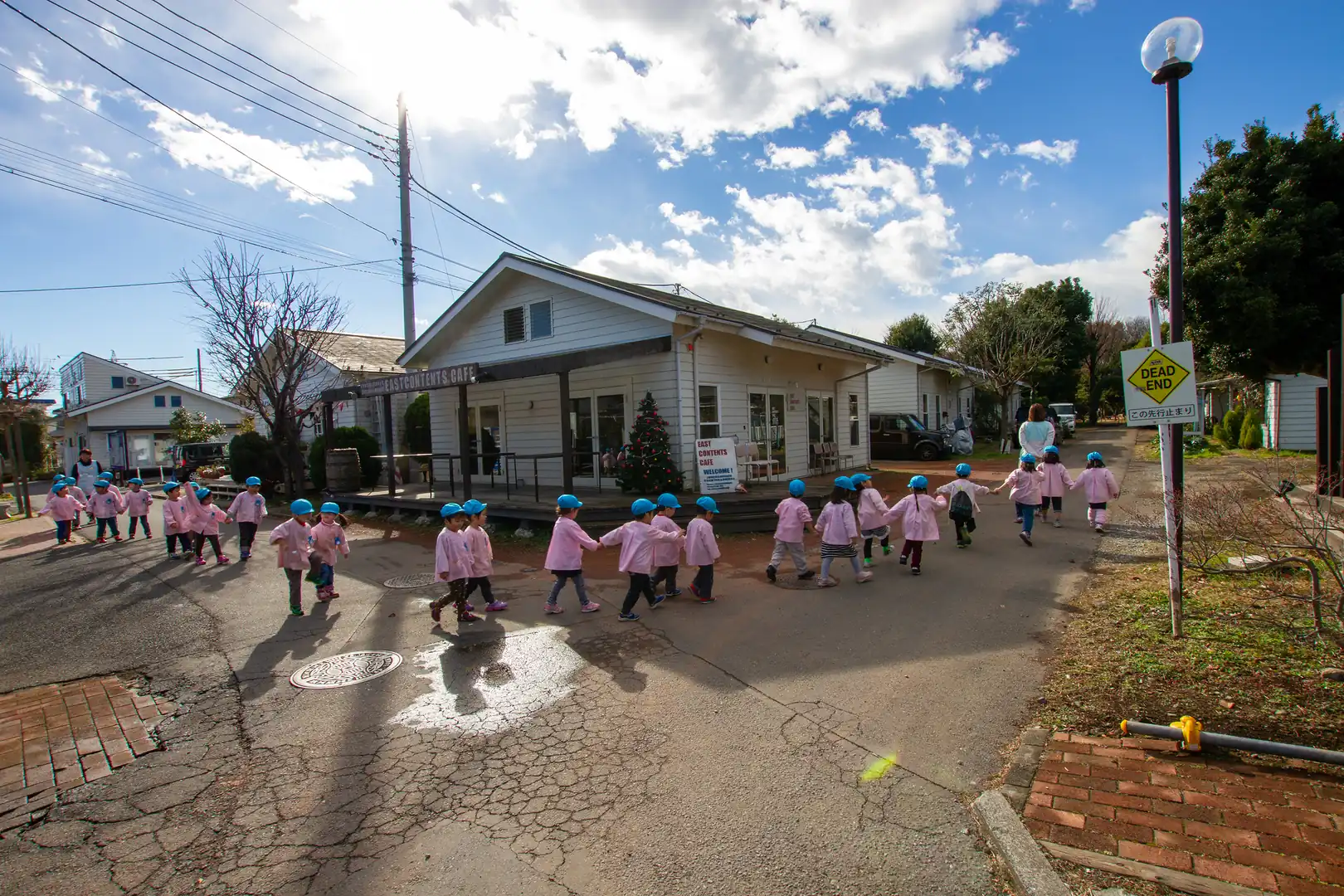
Destination
Isono Shokai Co., Ltd. / Osamu Watanabe Architects
A utopia can be created (Part 2)
2024.08.01
Johnson Town provides welfare services that would normally be handled by the government. It is a unique town where people who live, work, and create homes are integrated, and families with children, creators, people with disabilities, and the elderly live and work actively. In the first part, we asked about its history and design points. In the second part, Mr. Akio Isono of Isono Shokai Co., Ltd., the owner and manager of Johnson Town, and Mr. Osamu Watanabe, who planned and designed the town, talked about how they created an inclusive town. (Part 1)
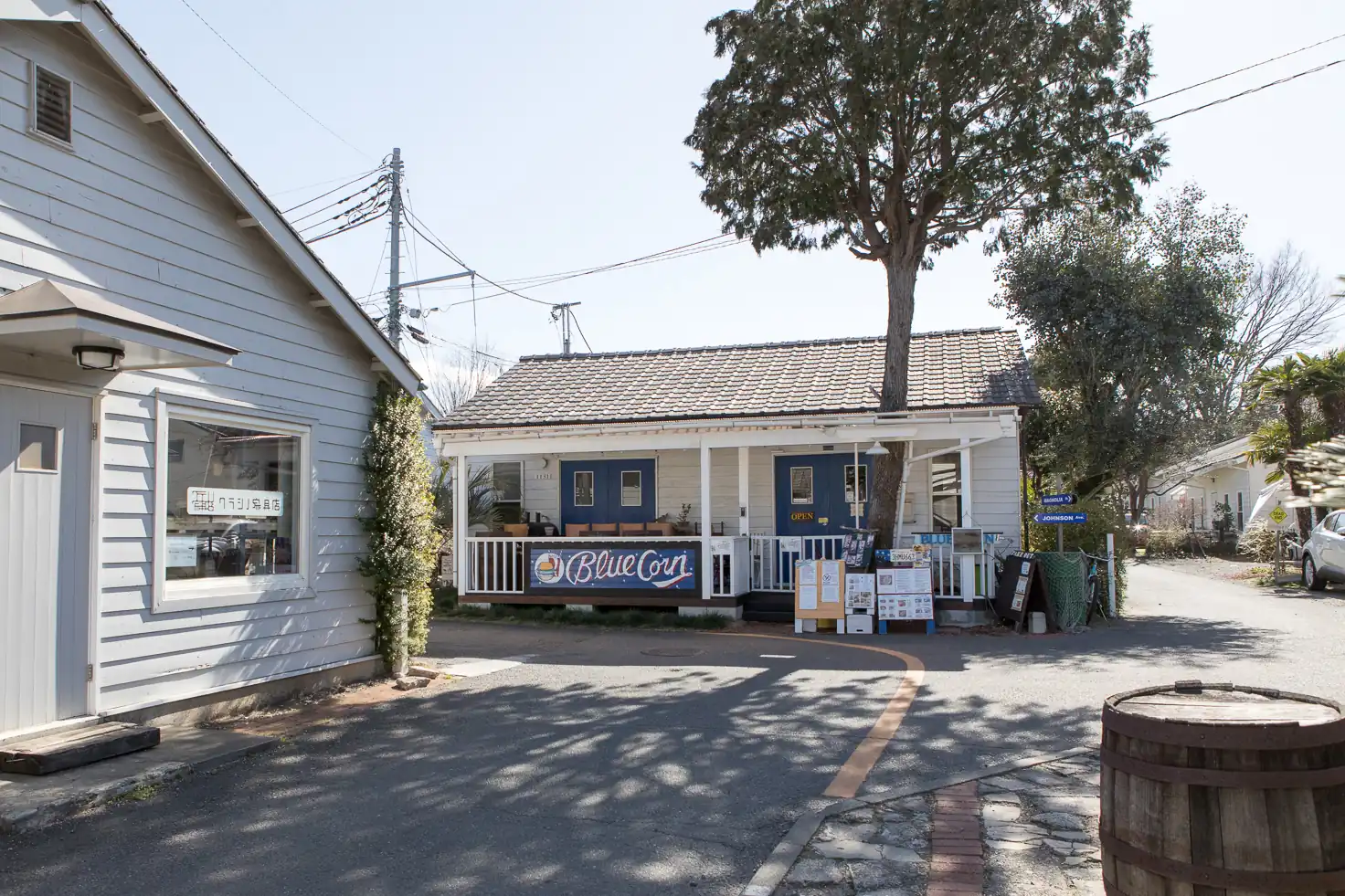
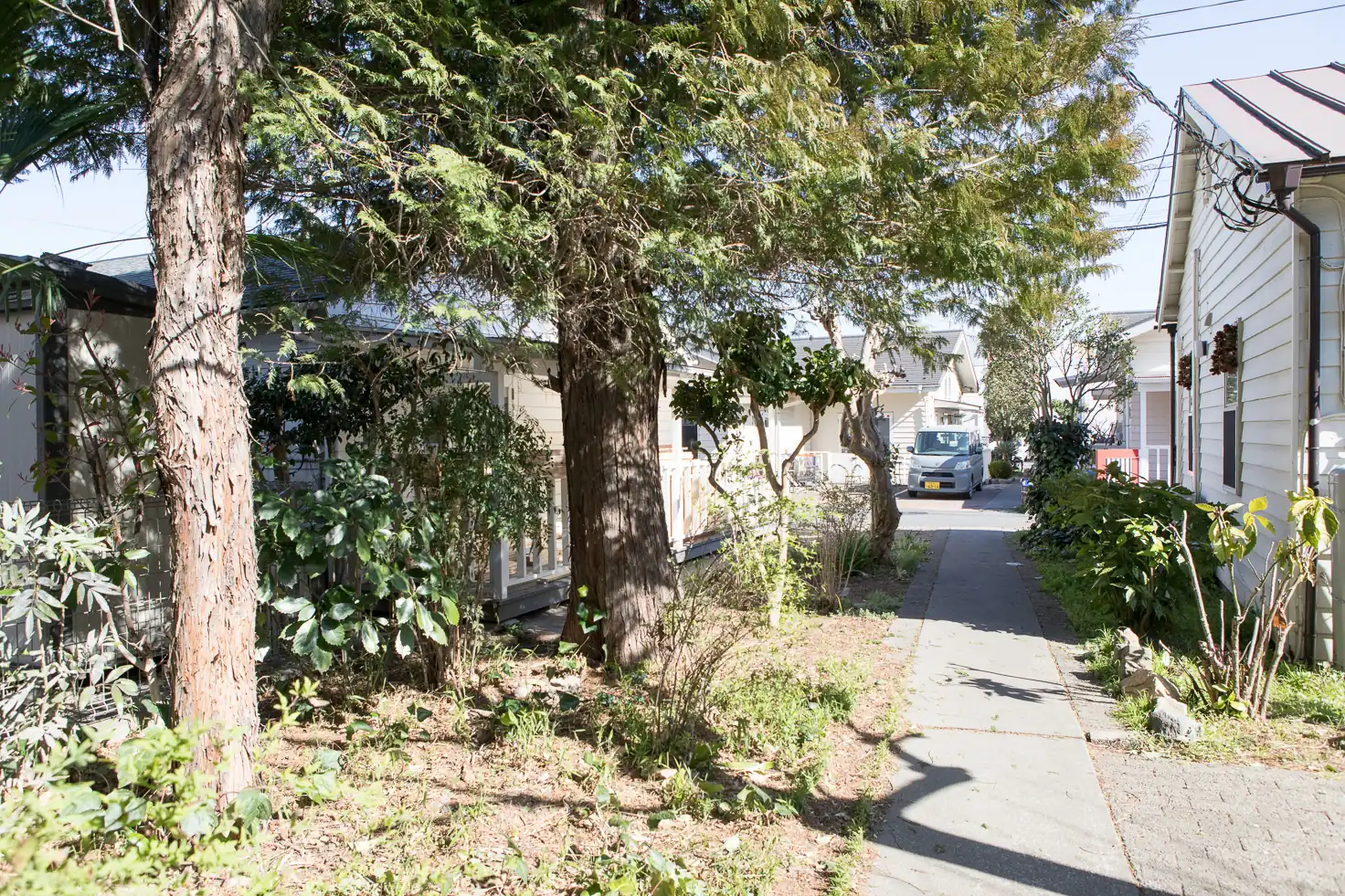
An inclusive town was created
— Johnson Town renovation project began in 2004. Please tell us why you applied for GOOD DESIGN AWARD in 2021.
Osamu Watanabe (Osamu Watanabe Architects) It was a low-key project, so I thought it would go on like this without being evaluated by anyone. I taught as a lecturer at Nippon Institute of Technology. Perhaps because of my unique classes such as “case studies,” teachers from other classes and universities came to observe us.
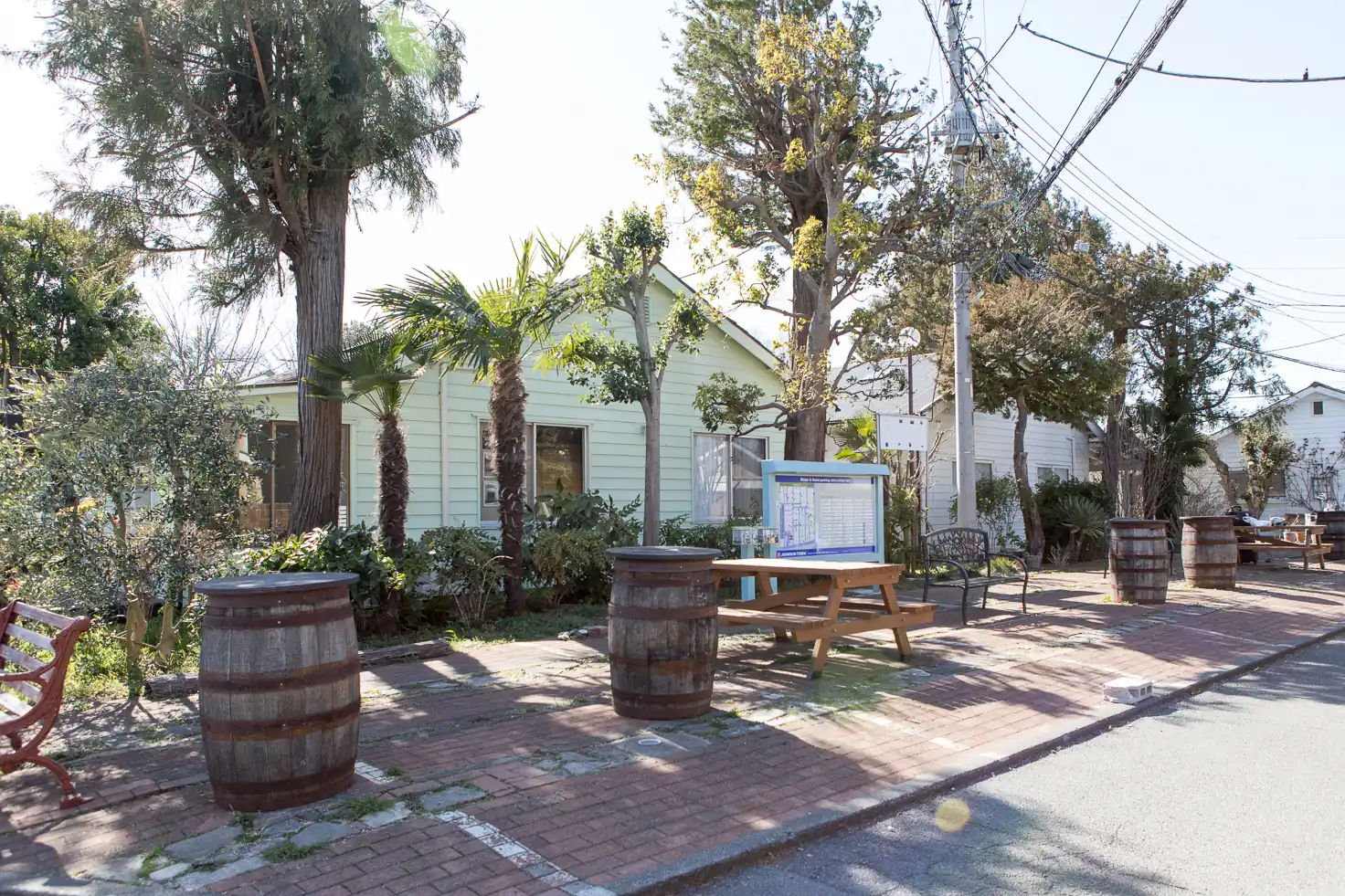
Watanabe One day, Mr. Akifumi Wakabayashi, who carries out activities to utilize historical assets in Saitama Prefecture, came to me. I asked him, “Have there been any interesting buildings recently?” He said, “There’s an interesting town called Johnson Town, and I’ve come to see it.” I replied, “That’s what we’re working on.” (Laughter) Then, he organized a tour of Johnson Town by the Saitama branch of the Architectural Institute of Japan.
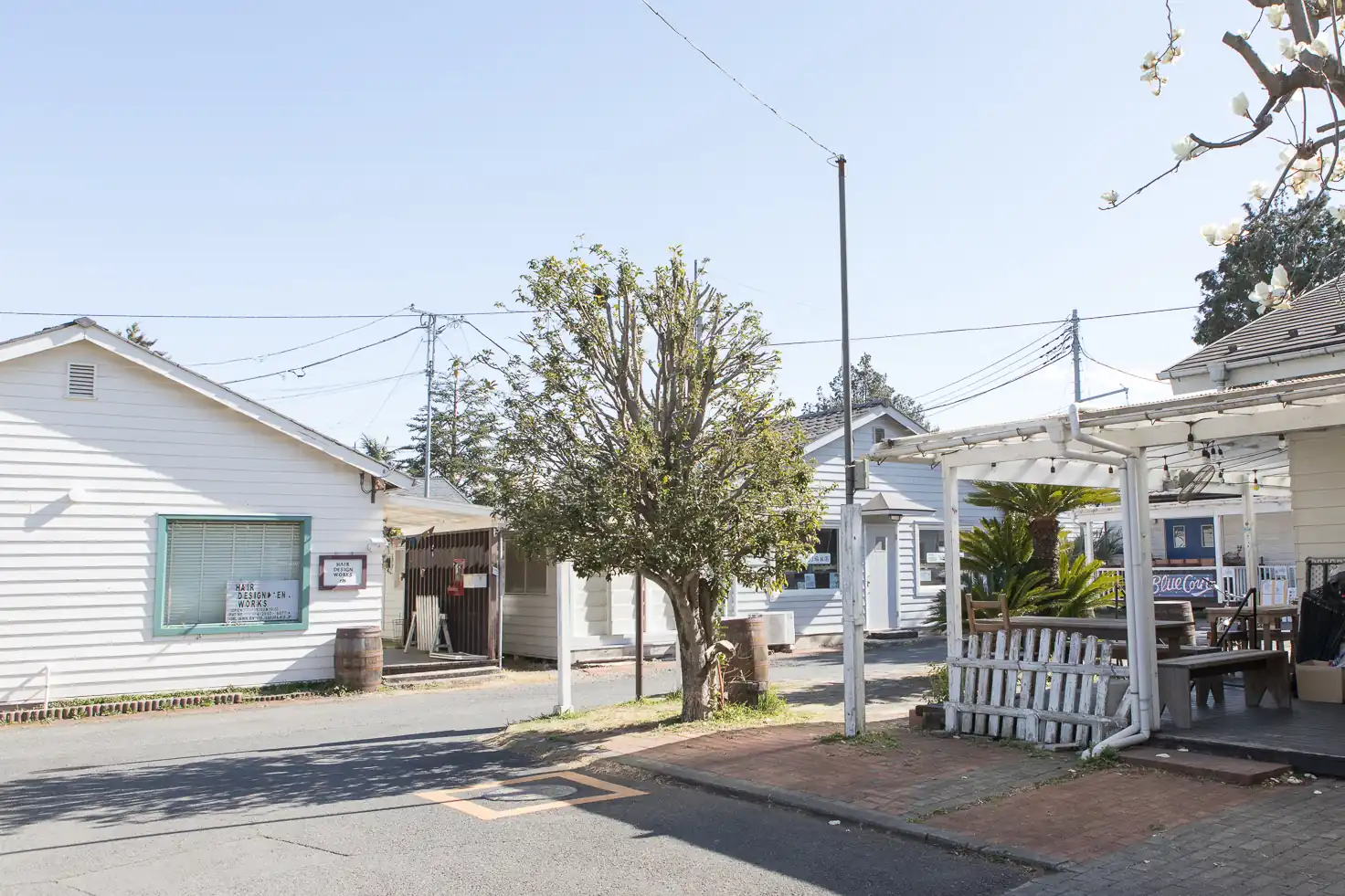
Watanabe At the tour, I explained the town project. Mr. Wakabayashi said, “This is interesting. Why don’t you apply for a townscape award called Urban Landscape Award?” So, I applied for it in 2015. Prof. Hidenobu Jinnai, an architectural historian, visited the town as the head judge of Urban Landscape Award. He said, “I’ve never seen such a town in the world. Submit it for the Architectural Institute of Japan Prize.”
Thanks to his recommendation, we won the Urban Landscape Award (an award from the Land, Infrastructure, Transport and Tourism Minister). At that time, it was evaluated as “a valuable project of overcoming a difficult state of disrepair, renovating and preserving a cultural heritage site, and creating a cultural and attractive landscape.” As recommended, we also applied for the Architectural Institute of Japan Prize.
— The general review gives us a good idea of what Johnson Town is like.
Watanabe Many judges visited the town over two days, and evaluated it as follows: 1. While preserving the architectural value of the U.S. military houses, we reinterpreted the idea of the houses with modern values, and proposed a new residence form called Heisei House. 2. It not only provides housing, but also offers tourism resources through events and information dissemination by the community in the new era of the town. 3. Isono Shokai Co., Ltd., the owner works tirelessly to maintain the atmosphere and value of this town with love for the community. And it won the award.
In 2017, we applied for the Kids Design Award. The number of child-rearing families increased in the town. The number of children increased from zero to 50.
It was awarded the excellence award (Minister of State for Measures for Declining Birthrate Award), and recognized as a good example of how to develop a child-friendly community, by taking advantage of the uniqueness of the town and putting community building into practice, and proposing new lifestyles to address the abandoned house issue of urgency and revitalize the region.

Watanabe Later, on land near the town owned by Isono Shokai Co., Ltd, “Heisei House” was built as part of type-B continuous employment support for people with disabilities, operated by a social welfare corporation. The corporation has rented apartments in Johnson Town to provide housing for people with disabilities for more than 20 years.
Isono Shokai began to provide such people with jobs such as caring for plants and trees in the town. It has become an inclusive town where people with disabilities, the elderly, and child-rearing families can live and work.
Because the evaluation axis of buildings in GOOD DESIGN AWARD has changed, I thought an inclusive town would be appreciated, and applied.
House as a canvas
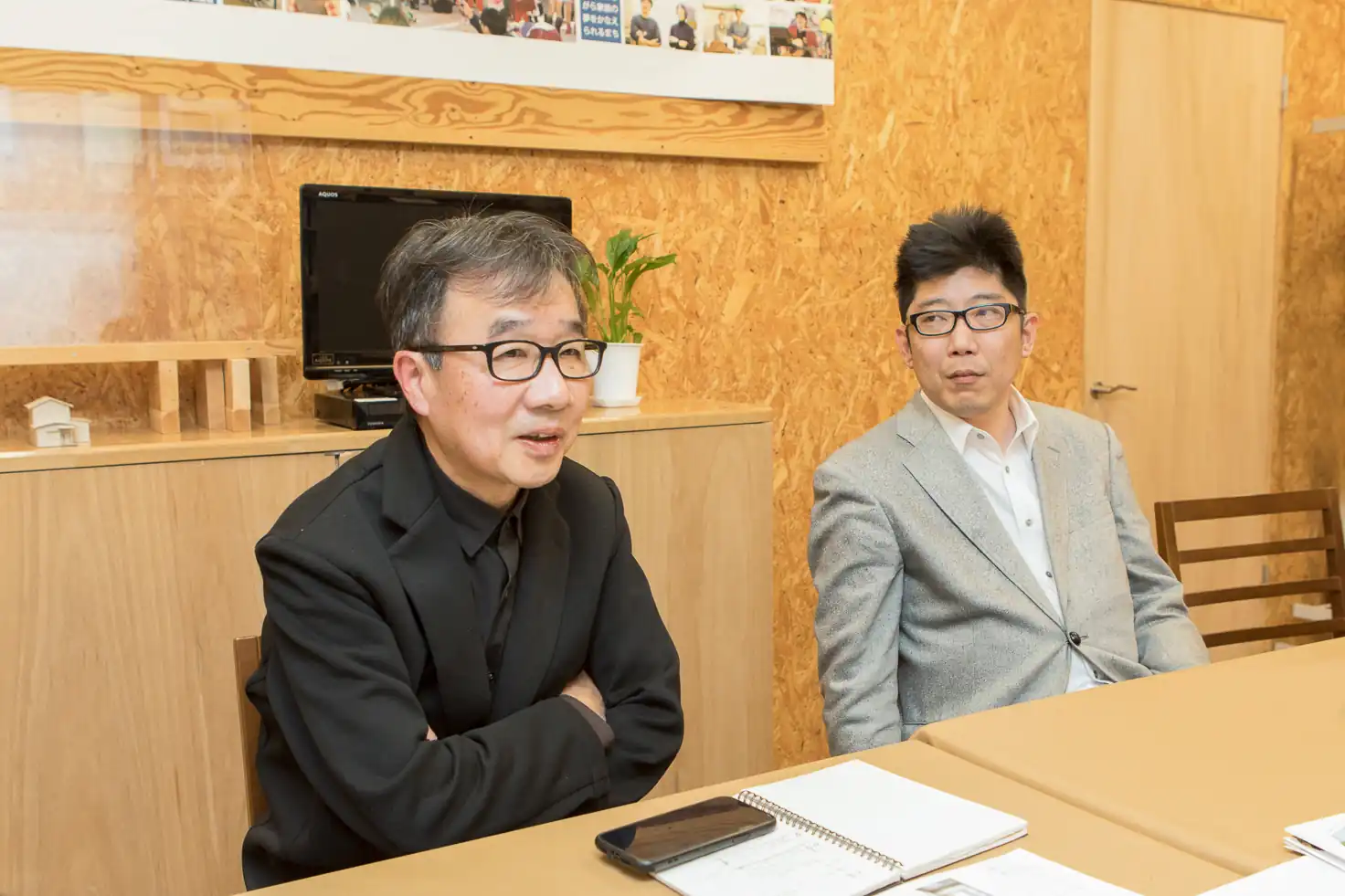
— Your aim is to be an inclusive town, which was evaluated and recognized by the GOOD DESIGN AWARD. How did you achieve inclusivity?
First, I heard that Johnson Town was planned to honor the DNA of the U.S. military houses. The U.S. military house is based on the concept of enhancing the cost performance of buildings, and as a result, Johnson Town has a space with a high degree of freedom. Here you can see the difference in the idea of housing between America and Japan.
Watanabe For example, natural solid wood, especially unknotted wood, is considered valuable in Japanese wooden houses, and a piece of wood may cost several hundred thousand yen. Looking good comes before performance. By having the house built by a skilled carpenter who could make use of the precious lumber, the house became an asset to be passed on to the next generation. It is a housing development developed in a sedentary society.
On the other hand, in the pioneer days of the United States, a diverse group of people came and built their houses by themselves to make their dreams come true. At that time, they developed a cheap and easy way to build a house.
Similarly, people in the town freely renovate their homes in Iruma City, a suburb far from the city center. They live there earning money by doing their favorite jobs (shops). The options are endless.
Frank Lloyd Wright referred to such a situation “democratic.” He said city dwellers had limited options for living and that urban cities were undemocratic.
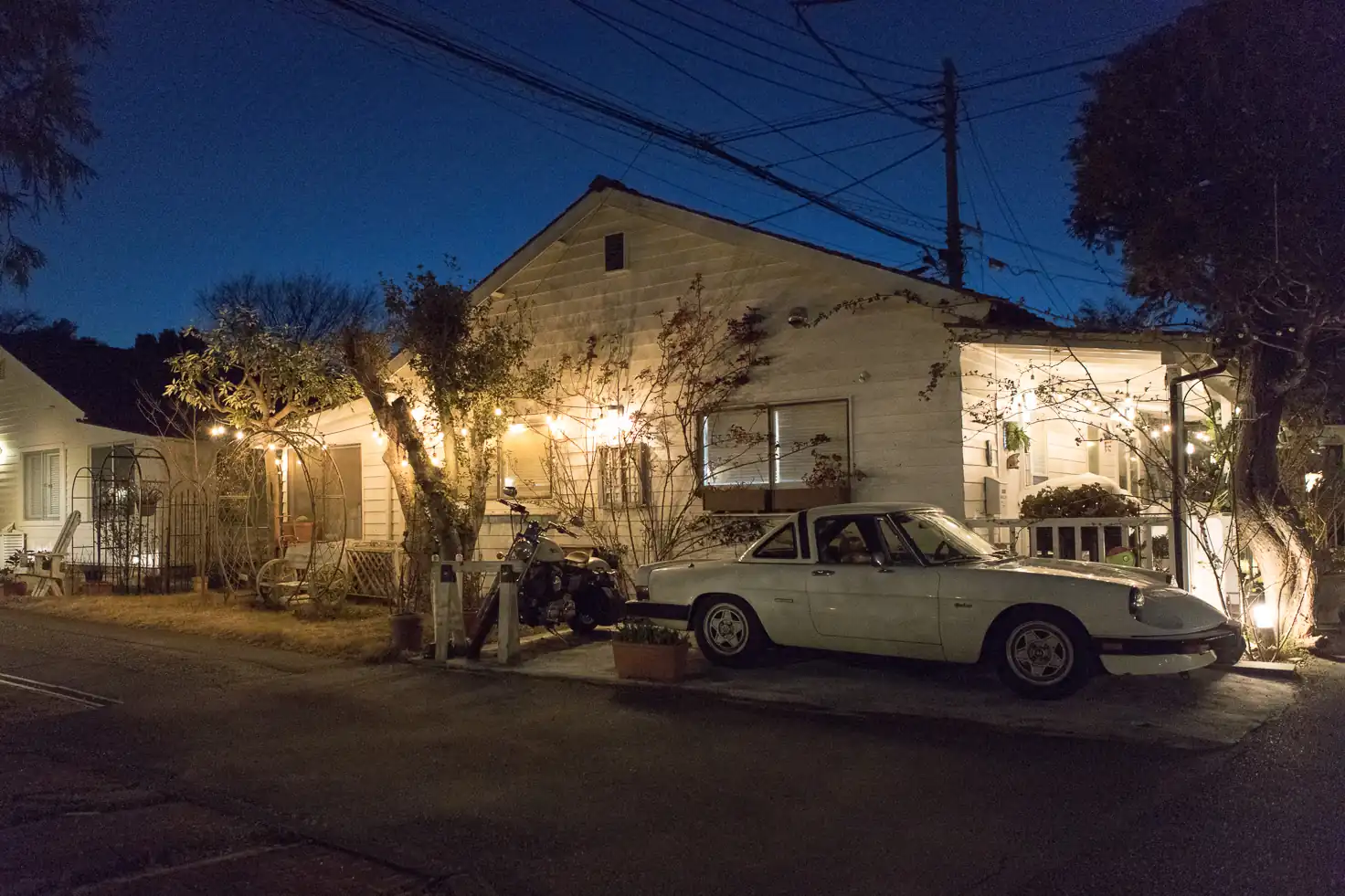
— American movies often show that residents renovate the interior by themselves. I think Japanese people had a latent desire to build their houses by themselves, but they were hesitant to tamper with a dwelling built by a master builder, and in general, could not even drive a nail in a normal rental house.
Many people may be waiting for rental homes like Johnson Town, which they can freely renovate the interior.
Akio Isono (Managing Director) Many residents certainly like DIY. Isono Shokai employs a carpenter, who is stationed in the office building in the town as maintenance staff. We make it possible to respond to requests for repairs or changes in partition layout as swiftly as possible. For renovations at move-in, we listen to and discuss the needs of the customers who will be moving in. We support our customers as much as possible to make them feel secure.
Also, as Johnson Town, we lend a portion of the renovation costs to tenants that we feel are necessary to enhance the culture of the town, and we even persuade them to come. It has long been said that a shinkin bank (credit union) is indispensable for the development of a town, and Isono Shokai has played a role in this regard as well.
Regarding renovations, as with ordinary rentals, the principle is to restore the property to its original state upon leaving. However, there are cases in which renovations improve the property value. In that case it’s not necessary to return it to the original state. As a result, the next tenant will have no opening costs, and can limit their risk.
Residents can’t wait to wake up in the morning
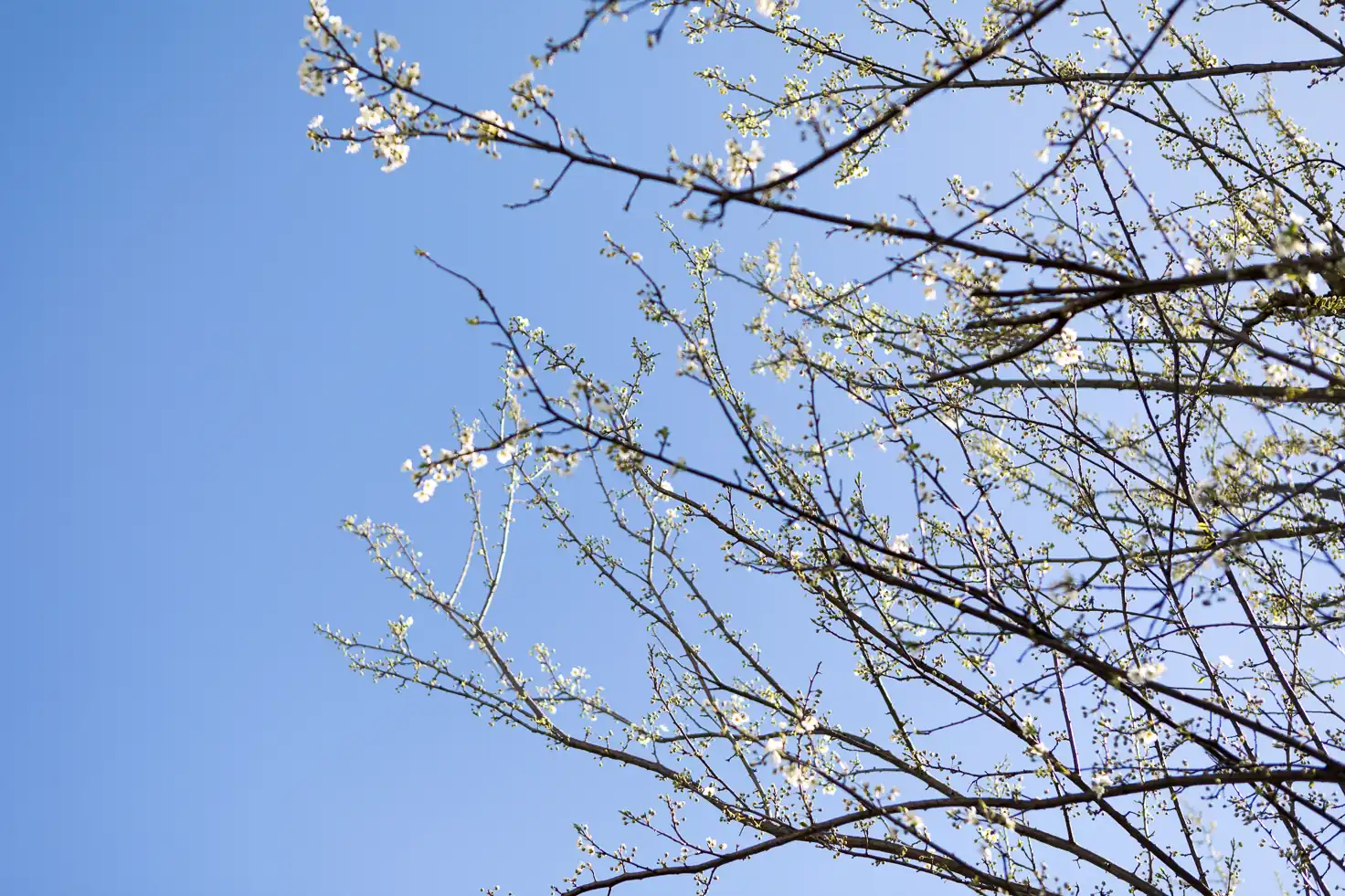
— The tenants can renovate their property as they please, thanks to your support. Residents can open shops at their houses at low cost and risk. I was amazed to see elderly people who had retired and families raising children freely opening their favorite shops and realizing their dreams.
Watanabe Wooden boards and other materials removed from the exterior walls were stored in the warehouse and could be used freely at no charge. People used the over 50-year-old wooden materials in unique ways, such as adding them to the ceiling, making furniture, and using it in place of tiles in a shower room.
If you do it yourself, it’s practically free, but it was also interesting to see people coming up with original ways to use it, different to what you would get if you asked an interior designer or construction company.
At the end of the consultation, I said, “I think you should do whatever you want to do.” A resident told me, “I can’t wait to wake up in the morning. I think about what to do and where in my dreams.”
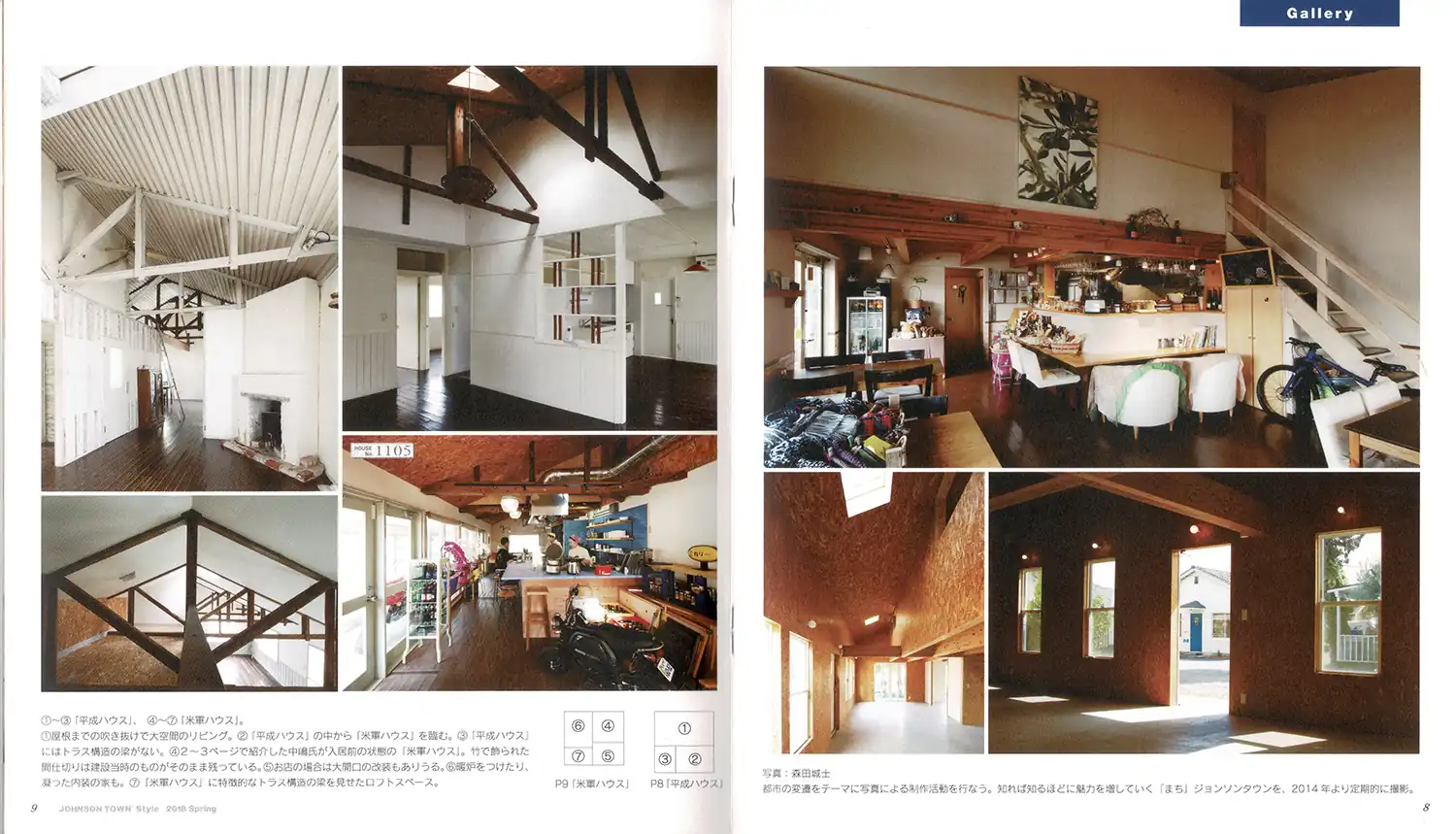
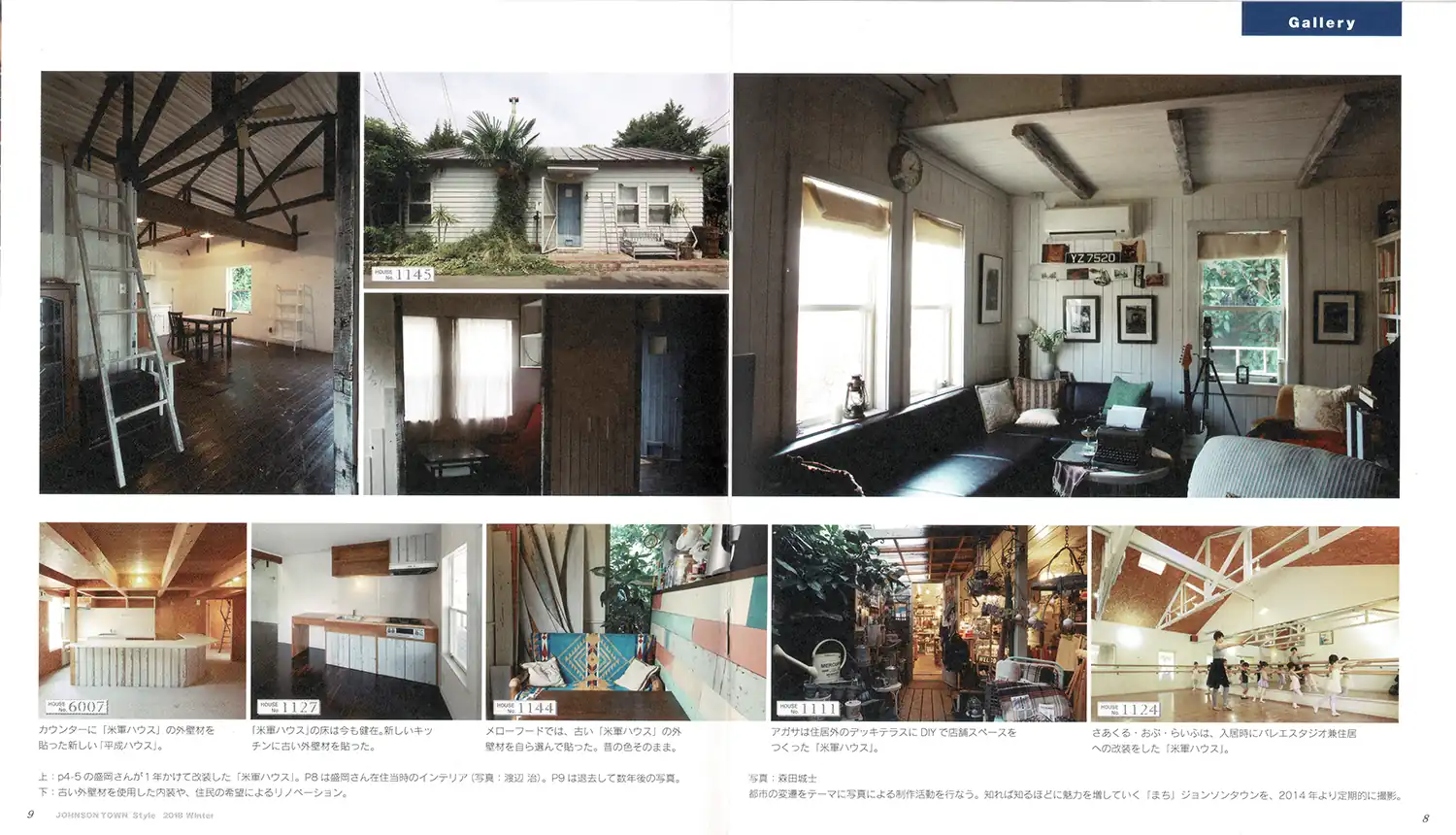
— Looking at the interiors featured on the Johnson Town website and in the booklet “Johnson Town style,” it’s interesting to see the variety and creativity. It is different from monotone stylish interiors that are the mainstream now.
Watanabe I may say that we just prepared a canvas, and people are painting their favorite pictures on it. It usually costs more than 10 million yen to renovate a shop. But here, you can use the interior of the previous shop and reduce the renovation costs. That’s why retired elderly people can open a business at low cost and risk.
Older people have accumulated experience, and can make very good food. They can cook slowly here at their own pace, and can open the shop when they feel like it. A lot of young people from inside and outside the town come here and get to know each other, which motivates them to live and work.
Ideal senior housing was realized 70 years ago
— When it received the Architectural Institute of Japan Prize in 2017, it was praised as ‘a vibrant town with the potential to inspire seniors to be active and create a new framework for senior housing.’
Watanabe Prof. Kazuoki Ohara of Yokohama National University, specializing in architectural planning and environmental behavior, saw the elderly living in the town and actively running businesses, and said, “This may set a vision of the ideal housing for the elderly.”
He also contributed to a booklet, in which he wrote about Johnson Town, “I trongly sympathize with people who live here and run a coffee shop, pet shop, or other business. I was reminded of the basics of living. It is essential for us to have a job and connect with people. It is like work-oriented housing with services for the elderly.”
Akio Because there is no such service function, it’s not elderly housing with services like Mr. Ohara described. However, in the future, if it is equipped with a station where caregivers can patrol, it should be possible to make it elderly housing with services. I believe that all generations including young and old people can coexist in the right balance and resonate with each other.

Watanabe The basic plan of the remaining U.S. military houses in Johnson Town was designed by Mr. Seiji Yoshizawa, the founder of Yoshizawa KK, at the request of Isono Shokai Co., Ltd. about 70 years ago, based on the occupation houses built by the Japanese government on the base, and was constructed by imitation.
It was a completely barrier-free house with a large dining kitchen, and a large bathroom including a toilet, bath, and wash basin. A person in a wheelchair could move freely. There was a spare room, which was used as what we now call a walk-in closet. (There is no such room in the occupation house on the base.) The bathroom area is approximately 4.86 square meters, and is equipped with a flush toilet, wash basin, bath, and shower. Because it is large, it can also be used for nursing purpose.

Watanabe Japanese conventional construction methods were used in the lower part. The roof structure was a truss structure* made of thin members. The minimum number of members supported the roof with a span of about 7.3 meters. Even if all the partitions inside were removed, the roof would not fall down. The trusses were assembled on the floor, placed on the wall one at a time, turned around, and connected together with joists. The roof was attached without putting up scaffolding after gluing sheathing roof board, which was the most reasonable construction design.
- A special structure supported by triangular forces. Even thin members can support a large roof without columns.
Design details that are not visible
Watanabe When I first saw it, I was really impressed, thinking, “A wheelchair-accessible house! This can be called welfare housing.” Therefore, I respected the original plan and developed it into the plan of the Heisei House. By installing hand rails as needed in bathrooms and toilets and a lift with stairs (in the case of the Heisei House), it became possible for people with disabilities to live there.
What has the housing industry done in the 70 years since the end of World War II? Nothing beats this plan made 70 years ago.
— The Heisei House has a large studio on the first floor, and the attic can be used as sleeping rooms, etc.
Watanabe Because the style and volume correspond with the U.S. military house, the ceiling height of the first floor is low, and you cannot stand in some places in the attic. It is not easy to come up with this cross-section from scratch. Normally, people would say the ceiling of the second floor should be higher. But when I take customers to a house that’s already built, they say, “It’s like Heidi’s attic. It’s so fun!.”
As the insulation performance of the U.S. military house was improved during the renovation, 24-hour air-conditioning is possible in combination with ventilation, allowing for very rational (energy-saving) temperature control. We’ve made the specifications of parts that can’t be seen very high. If there’s a part that we designed, it’s the specs for invisible aspects. We focused on controlling the invisible air environment, how to make use of old things, and how to create attractive spaces with limited volume.
After the renovation, the insulation was improved so that the one room can be heated and cooled 24 hours a day, allowing for very reasonable temperature control. Along with thermal insulation, it allows ventilation and air flow, and the specs for invisible aspects are very high. If there’s a part that we designed, it’s the specs for invisible aspects. We focused on the know-how of how to make use of old things and how to gain attractive volume while minimizing costs.
Flat houses that help you live longer

— The ability to increase energy efficiency and maintain a constant temperature environment is a great feature for the health of the elderly.
Watanabe People can’t stand hot and cold. Heat shock is caused not only by heat stroke in summer but also by sudden temperature differences in winter. If the feet become cold, blood clots can easily form, which can be fatal. Floor heating has an effect similar to being in a hot spring. Elderly people living in other houses we designed live a long and healthy life. Some of them are more than 90 years old.
— Building a house to help people live longer.
Watanabe About 20,000 people are killed each year by stumbling on an uneven surface, mainly an uneven surface at an entrance. And about 20,000 people die in toilets and bathrooms with temperature differences. According to the Building Standards Act, the foundation should be more than 30 cm away from the soil. That’s why there is an uneven surface at the entrance. However, the foundation decays over time because of condensation water in contact with concrete, not because rainwater seeps in. If the edge between the foundation and the substructure is cut off, the surface can be lowered.
— First of all, because it’s a one-story house, it can be made barrier-free. Living in a one-story house is a luxury in a city with high land prices.
Watanabe In general, building a one-story house of 66 square meters and a maximum building coverage of 40% requires a site of more than 165 square meters. It’s difficult to build it in cities including Tokyo because of the soaring price of land. In the first place, there is almost no land of 165 square meters,and if there is, it costs more than 100 million yen.
Akio Because this place is an 18-minute walk from Irumashi Station, rental rates around here are quite cheap. Our rental rate is 1.5 to two times higher than the rates around here. Initially, real estate companies said the rental fee was too expensive and nobody would rent it. So, we created a website and asked for renters directly. Then, we got inquiries right away. They said that it felt cheap compared to rental rates in Tokyo.
Watanabe The first person to contact us was Mr. Yuichiro Tanaka, a film director, who visited our website and said that he sympathized with the approach to town development. Then, he moved in. He participated in meetings about how to build this town, and made some requests such as building a music studio.
A studio was actually built, and as a test run, a famous musician came in secret to play, at full blast. Complaints came from people 100 meters away(laughs). We took further soundproofing measures. Those were intense days.
— There have been many episodes in the long process of creating a town. Nevertheless, I expect you will work with a local government to utilize the know-how of Johnson Town in the future town planning.
Watanabe I’m afraid it would be difficult. Johnson Town began with residents understanding the owner’s concept of community development, and Isono Shokai is a resident maintenance company that maintains the town.
All the houses in the town are rentals. The residents can freely renovate them and open shops. The interior partitions can be changed according to their wishes. If you draw a picture of how you want your garden to look, the owner will provide you with plants and tools. In this way, supporting spontaneous creativity has made the town more attractive.
The town is located in a suburb far from the city center. Because the image of Johnson Town has spread widely on the Internet over the past 20 years, and more people have been able to work remotely, more people have come to Johnson Town to create their own lifestyles and achieve their dreams.
When entering a shop, you can talk to the store owner, and quickly become acquainted. People from outside become residents because they want to become acquainted with such people. According to my research, the majority of visitors are local people, and a “local economy” is in place, just as it once was in medieval towns.
If there is any know-how, I think it would be having someone on-site and responding to residents’ complaints and requests, and for the owners to continue to have a goal of what kind of town they want to create. In Johnson Town, people with disabilities, the elderly, and the child-rearing generation can live and work and have a sense of purpose. I don’t think such a town would arise spontaneously.
— Of course. On the other hand, the increase in the number of rental houses with a higher level of freedom may be a breakthrough in changing the housing situation in Japan. Thank you very much for today.
Johnson Town
Isono Shokai Co., Ltd. / Osamu Watanabe Architects
A run-down residential site for the U.S. military was revitalized as a rental housing site. Based on the strong will of the land owner and the architect, the exterior maintained a unified impression of an architectural group consisting of Beigun houses and Heisei houses, while the interior was boldly renovated according to the requests of residents, pursuing an ideal living environment. They are aiming to create an inclusive town by considering accessibility, for example, by cooperating with social welfare corporations. People sharing such direction came together, and shops and activities have expanded, creating a unique streetscape and lifestyle.
- Award details
- 2021 GOOD DESIGN GOLD AWARD “Johnson Town” https://www.g-mark.org/en/gallery/winners/9e5e871f-803d-11ed-af7e-0242ac130002?years=2021
- Producer
- Tatsuo Isono, Akio Isono, Isono Shokai Co., Ltd.
- Director
- Tatsuo Isono, Akio Isono, Isono Shokai Co., Ltd. + Osamu Watanabe, Osamu Watanabe Architects
- Designer
- Osamu Watanabe, Mami Kawai, Miyuki Saito, Yumi Ohzawa, Arisa Mae, Norie Sakamoto, Osamu Watanabe Architects
Tomoko Ishiguro
Editor/writer
After working in the editorial department of “AXIS,” she became a freelancer. She writes, edits, and plans, with a focus on design and life culture. Her major editorial works include LIXIL BOOKLET series (book, LIXIL Publishing) and “Oishisa no Kagaku” (magazine, NTS Publishing).
Chieko Shiraishi
Photographer
She started photography after taking a black and white enlarger lesson organized by a town. After working as an assistant photographer, she is mainly active in taking photos for magazines, etc., while creating works in a darkroom.


